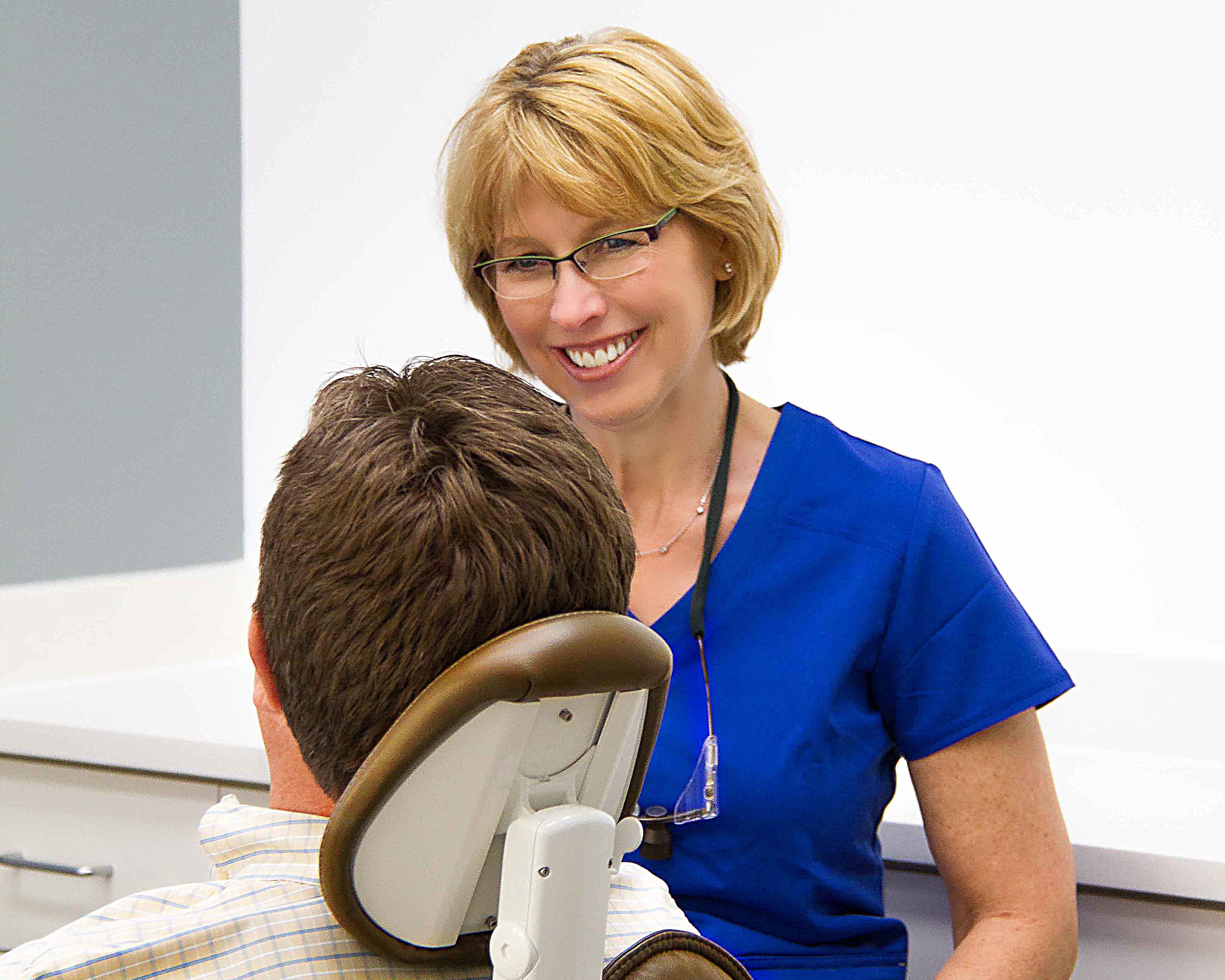During your initial examination in our office the doctor will make a diagnosis and discuss your treatment needs. A range of treatment options may be available depending on your specific diagnosis. We recognize that no two patients are alike and we are proud to provide individualized care, tailored to your specific needs. The following information provides background on some of the treatment options that we may recommend.
Our Procedures

Non-Surgical Therapy
Scaling and Root Planning
Scaling and root planing, often referred to as “deep cleaning”, is a procedure performed to smooth and clean the root surfaces by removing the plaque and calculus (also called tartar or hardened plaque) that has accumulated over time. Treatment is typically performed with a local anesthetic using special instruments, including the latest ultrasonic and laser therapy, below the gum tissues. Anywhere from one to four treatment visits are needed, with a follow-up appointment to assess the results of therapy. Often times no other treatment is warranted other than ongoing maintenance care (see below).
Additional non-surgical treatment may be indicated and could include use of special antibiotics (Sustained Release Antimicrobials) placed under the gum tissue. If the disease cannot be controlled with non-surgical therapy, surgery will likely be recommended to eliminate the pockets and improve health.
Surgical Treatments
Periodontal Surgery Options
Periodontal Surgery to Reduce Pockets
When non-surgical treatment cannot eliminate the disease, surgery may be recommended to help reduce the pockets that harbor harmful bacteria. During this procedure the gums are moved back so that your doctor can clean the roots and assess the bone. When the surgery is completed, the tissues are then positioned tightly against the tooth so that the pocket is eliminated. At times the bone loss caused by the bacteria create spaces or areas where regeneration surgery can be performed to re-grow the bone supporting the teeth, also known as Periodontal Regeneration.
Periodontal Regeneration
As periodontal disease progresses it destroys the bone that holds the teeth in place. If this continues, the teeth become loose and can fall out. Periodontal regeneration is performed to re-grow bone that has been lost as a result of periodontal disease. A variety of materials and techniques are used to achieve regeneration including the use of bone grafts, growth factors and barrier membranes. Through research, the field of periodontal regeneration is expanding and allowing patients to maintain their natural dentition. Dr. Robert G. Schallhorn, is one of the founding fathers of periodontal regeneration and developed many of the techniques that are used today. Our office continues to be involved in clinical research evaluating cutting edge regenerative techniques. To find out if you may be a candidate for this procedure call the office for an appointment.
Gingival (Gum) Recession Treatment
Gum graft surgery is performed to either cover exposed root surfaces (see gum recession treatment) or to replace missing gum tissue. While gum grafts are often taken from the palate (roof of the mouth), alternative gum grafts are available. The gum graft is used to replace the missing gum tissue and to cover exposed root surfaces when possible. Treatment can halt gum recession and often result in improved esthetics and comfort.
Crown Lengthening
When a tooth has extensive decay or deep fillings, there may be insufficient tooth structure remaining above the gumline to place a crown (or cap) on the tooth. In such cases, your dentist may recommend a crown lengthening procedure. Treatment involves modification of the gum and bone to expose more tooth structure and allow placement of a healthy and functional crown.
Maintenance
Once treatment has been completed and the mouth has been returned to a state of health, it is critical to follow a regular program of periodontal maintenance. Periodontal disease, like many inflammatory diseases, is never cured but only controlled. These visits are different than routine cleaning appointments in that they are designed to assess and treat changes in the periodontal status on an ongoing basis.
Multiple studies have shown that in the absence of proper maintenance care, disease will recur and progress often times without symptoms. For many individuals, an interval of 3 months has found to be most effective. These visits may be performed alternately between our office and your general dentist depending on the individual case and type of treatment completed.

